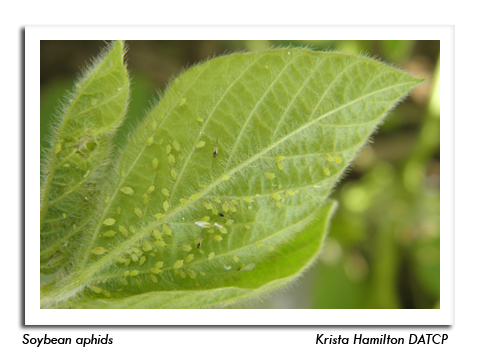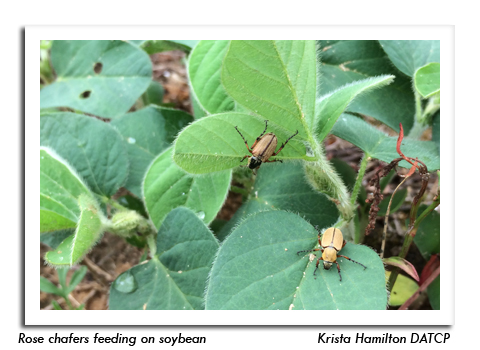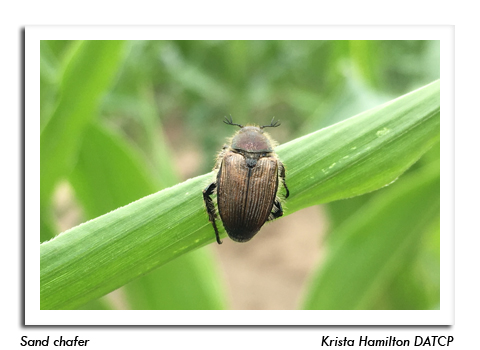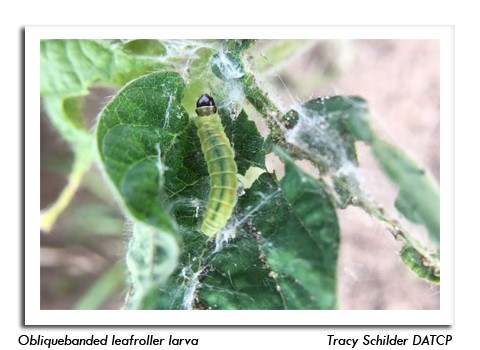
 |
|
|
Soybeans
Volume 64 Number 9 Date 06/27/2019 SOYBEAN APHID - Early colonies have been found in soybeans in Columbia, Eau Claire, Pepin, Sauk, and Trempealeau counties since June 19. Counts remain extremely low in most fields. Of the 28 sites surveyed from June 19-26, one had a count of 87 aphids per 100 plants, three had averages below 10 aphids per 100 plants, and 86% of the fields had no detectable aphid population. Routine monitoring for aphids should begin by mid-July. ROSE CHAFER - This insect is common this season, and light damage is apparent in soybean fields on sandy soils in the southern and western Wisconsin. Defoliation levels have not exceeded the 30% threshold for pre-bloom soybeans in any field checked by DATCP as of June 26. SAND CHAFER - Low to moderate populations were encountered in soybeans and corn near Holmen in La Crosse County in the past week. The adult beetles, notable for their similarity to Japanese beetles, ordinarily do not cause economic damage to crops, though injury by the immature grubs to potato tubers has been reported. Only light leaf feeding was observed in the soybean fields with sand chafer beetles. SOYBEAN DEFOLIATORS - A variety of minor defoliators can be found at very low levels in many soybean fields. Included in this category are bean leaf beetles, green fruitworm larvae, grasshopper nymphs, obliquebanded leafrollers, rose chafers, silver-spotted skipper larvae, and thistle caterpillars, all of which were noted on fewer than 2% of plants examined in fields surveyed during the reporting period ending June 27. Prebloom soybean fields with combined defoliation rates of 30% or more may qualify for treatment, though defoliation in the vegetative stages seldom results in yield loss, especially when soil moisture, temperatures and other growing conditions are favorable. The economic threshold is lowered to 20% defoliation once soybeans reach the bloom and post-bloom stages. -- Krista Hamilton, DATCP Entomologist 





|
|
|